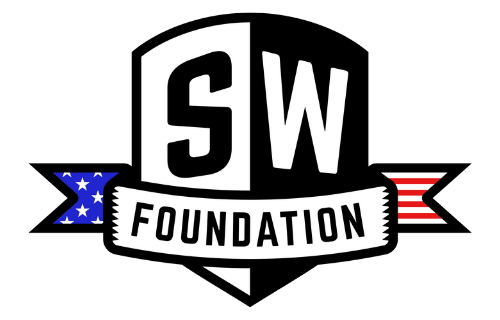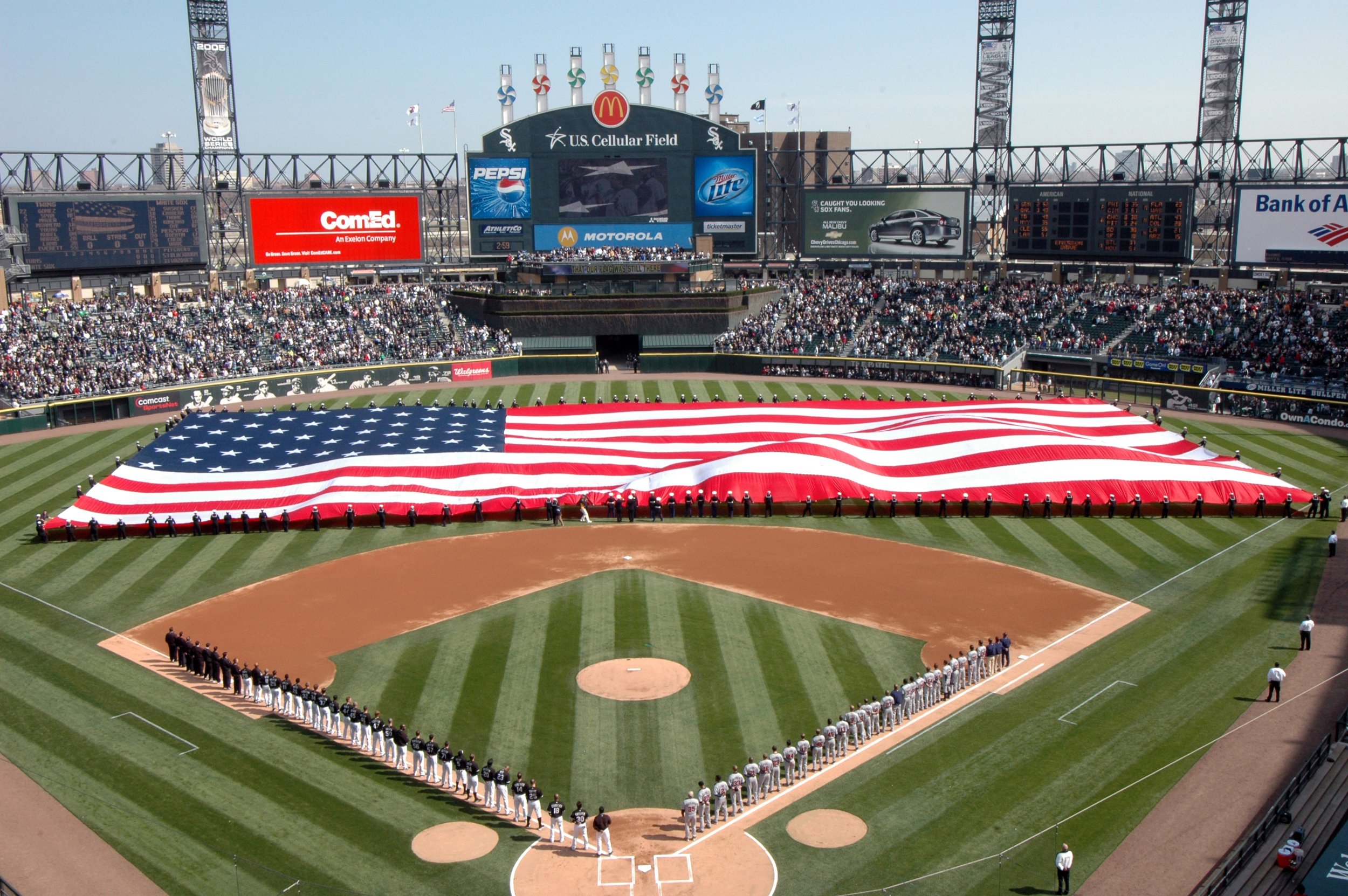From the Diamond to the Battlefield
If there are two things that have been constant in the United states over the last century they would be baseball and the military. During times of war drafts are often instituted to quickly fill the ranks of the United States military and while they have not always been operated fairly, they often force even professional athletes to enter the armed forces. Due to this, professional baseball players have participated in many major conflicts from the First World War to the modern conflicts in the Middle East.
Captains Matthewson and Cobb
Following the sinking of the Lusitania and the interception of the Zimmerman telegram the United States entered World War I. At the beginning of US involvement, draft deferments were liberally handed out to major leaguers, however in November 1917 these were declared void and 90 percent of ballplayers were eligible for the draft. While many players decided to get in front of their service and enlist others were drafted. Those who chose to work for essential industries, such as shipyards and weapons factories, to secure their deferment were accused of draft-dodging and were often blackballed from playing in the majors after World War I ended. The Chemical Warfare Service was apparently attractive to major leaguers as a military occupation. Ty Cobb and Christy Matthewson, two icons of the Deadball Era, enlisted into the army and served overseas in a company that also included Branch Ricky. Thirty years later Rickey, who was the general manager of the Brooklyn Dodgers, would go on to sign Jackie Robinson. While the company would go to France too late to see combat, Matthewson’s playing career would be ended after inhaling mustard gas during a training exercise, this also led to his death from tuberculosis. Grover Cleveland Alexander was another star served in the Great War. Unlike the previous three, Alexander served in a combat role with an artillery unit in France where he earned the rank of sergeant. After the war he returned home with shell shock (known now as PTSD) and epilepsy due to enemy shelling and mustard gas. Despite this, Alexander continued to pitch in the Major Leagues for another twelve years and earned a place in the baseball hall of fame.
Captain Greenberg
After the bombing of Pearl Harbor Americans flocked to recruitment centers to fight against Imperial Japan and Nazi Germany; included among them were over 340 Major and 3000 Minor Leaguers. Plenty of hall of famers were included in those enlistments including Detroit Tigers great Hank Greenberg. In 1940, Greenberg became the first American league player to register for the peacetime draft and was sent to Ft. Custer as an antitank gunner. He was eventually promoted to sergeant and was honorably discharged in 1941 before reenlisting a year later in the Army Air Corps (USAAC), the predecessor of the Air Force. In 1944, after graduating from Officer Candidate School and being assigned to the physical education program, he requested a transfer overseas and was shipped to the pacific theatre where he served until the end of the war with B-29 bomber units. Another hall of famer with an even more distinguished service record was Warren Spahn, a pitcher for the Boston Braves who would be drafted in the Army as a Combat Engineer. Spahn was assigned to the 276th Engineer Combat Battalion who played a crucial role during the Battle of the Bulge. For his part in the Battle, Spahn would be awarded the Bronze Star and a Purple Heart; he later said of his service, “After what I went through overseas, I never thought of anything I was told to do in baseball as hard work. You get over feeling like that when you spend days on end sleeping in frozen tank tracks in enemy threatened territory. The Army taught me something about challenges and about what’s important and what isn’t. Everything I tackle in baseball and in life I take as a challenge rather than work.”
Captain Williams
Ted Williams has one of the greatest resumes in Baseball history despite missing several seasons while serving as an aviator in multiple wars. During World War II, Williams enlisted in the naval reserve and was eventually commissioned as a naval aviator in the Marine Corps. He decided to forgo playing on the naval baseball team, unlike many pro athletes, to be a flight instructor. He served as one until 1946 when he returned to the Red Sox. Six years later, while on the inactive reserve list, Williams would be called up and sent to Korea as a fighter pilot. Only two weeks into his 17 months of flying an F9F Panther, Williams saw combat and was hit by enemy fire forcing him into an emergency landing on his home airfield. Fortunately, after diving out of the plane, his only injury was a sprained ankle. He went on to fly 38 more missions before being honorably discharged due to an ear infection which disqualified him from flying. According to future astronaut John Glenn, Ted Williams, “Didn’t shirk his duty at all, he got in there and dug ‘em out like everybody else. He never mentioned baseball unless someone else brought it up. He was there to do a job. We all were. He was just one of the guys.” For his service, Williams would earn countless awards including, three Air Medals for Aerial Flight Operations, the American and Asian Pacific Campaign Medal, and the World War II Victory Medal.
Lieutenant Bumbry
During the Vietnam War the threat of the draft loomed large over the heads of everyone, and baseball players were not exempt from this. Al Bumbry attended Virginia State University on a basketball scholarship and only played baseball during his last year at Virginia State. He planned on becoming a physical education teacher but would end up being drafted in the 11th round by the Baltimore Orioles. In 1969, only two months into his first season with the Orioles’ Single A minor league team, he would be drafted again; this time by the US Army. Due to his college degree his was commissioned as an armored officer sent to South Vietnam. Al Bumbry commanded a tank platoon and was awarded a bronze star when he and his men captured a large quantity of supplies meant for the Viet Cong. After 11 months in Vietnam, Bumbry returned and his career took off. He was the American League Rookie of the Year in 1973 and won the World Series with the Orioles in 1983 as part of a 14-year career for the Orioles and San Diego Padres. Bumbry attributes his successful career to his time in Vietnam saying, “People ask how did I do so poorly in the minors that first year, not play for two more years, and then come back and make it to the big leagues so quickly. The answer I gave then, and I give now, is the changes I went through going to Vietnam and the maturity factor. I think I realized that I had been in a do-or-die situation, that I was responsible not just for my life but for other men as well. It must have made me focus more on what I had to do and what my responsibilities were. After that, baseball just didn't seem as hard as it was before,"
Specialists Pat Tillman and Kevin Tillman
The September 11th attacks that preceded the conflicts in Afghanistan and Iraq launched a wave of patriotism in the country that motivated many to join the armed forces. Several baseball players with promising careers chose a different path and decided to join the military. While not as high profile as his brother Pat, Kevin Tillman decided against a future with the Cleveland Indians and enlisted in the Army. Kevin was drafted in 1996 and 1999 but did not sign with a major league team until 2001 when he became a part of the Indians’ organization; where he went on to play 42 games on minor league teams. After enlisting in 2002, Kevin served with Pat in the Second Battalion of the 75th Ranger Regiment and was deployed to Afghanistan as a part of the War on Terror. Before his honorable discharge in 2005 he also graduated from the US Army sniper school.







